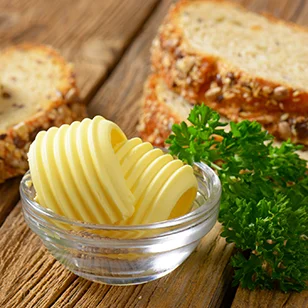Applications
LECITAL Lecithin in Confectionary

Confectionery and related bakery products are products that are in demand among all categories of consumers. The range of these types of products is very wide. The market for these products involves fierce competition, and in such conditions, manufacturers need to improve the quality of their products and expand the range. To improve the quality characteristics in the confectionery application, the use of surfactants is widespread. They have a significant impact on the condition and rheological properties of finished products. These include the use of lecithin.
Function of Lecithin in Confectionary:
• emulsifier
• improves shelf life
• sugar cristallisation
• better equipment release
• easy extrusion
• better manufacturability
• increases softness and decreases tackiness in chewing gum
• reduced fat confections
Lecithin use in Chocolate:
In the chocolate production, lecithin originally was used as a substitute for a far more expensive cocoa butter in order to reduces the costs of final products. If you need to take 4-5% of cocoa butter to fix the chocolate mass, then lecithin for the same purpose needs no more than 0.4-0.6%. Lecithin just like the cocoa butter performs an important technological function of emulsification of the chocolate mass. Without it, the process of delamination of chocolate and cutting off the oil occurs at a rapid pace, especially on a large production scale. Product stabilization is the effect of using lecithin in production. A common problem in the production of chocolate is conglomerates, i.e. clumped particles of the substance. Lecithin prevents the formation of conglomerates, forming a thin "membrane" around the particles.

When adding lecithin, chocolate gets the desired elasticity and density, the viscosity of the chocolate mass decreases, and the fluidity increases (which is especially useful for chocolate manufacturers who use larger mechanisms for production - chocolate with lecithin passes better through large pipes of industrial machines). This is necessary so that at the final stage of production, the chocolate can completely fill the production bar form. If there is an additional filling, it should flow evenly around it from all sides. Lecithin also increases the shelf life of chocolate products, increases its profitability and improves the crystallization of sugar, preventing effect of uneven color of chocolate. Also, due to the light roasting of cocoa beans or the high humidity of ingredients that easily absorb moisture (sugar, milk powder), water can still get into the chocolate. Adding a small amount of lecithin prevents clotting and premature thickening of the chocolate.
Summary of Lecithin Function in Chocolate:
• controls the viscosity of the chocolate mass
• prevent the appearance of bubbles and cavities inside the product
• emulsifies the product when combined with water
• enhances the fluidity of the chocolate mass
• reduces the caloric content of the finished product
• makes the chocolate mass homogeneous and easy to lay down a thin layer on the base
• lowers the cost of the final product
Lecithin use in Caramel and Candy products:
Lecithin is used in the manufacture of sweet candies containing oils and fats. Its formulation improves the emulsification of fat and syrup, contributing to a plastic glossy product. In candies, it also keeps chocolate and cocoa from separating, reduces the stickiness of food ingredients, while increasing the volume and shelf life and helping the ingredients maintain a uniform consistency. The phospholipid function, as a surface-active part of lecithin, gives it most of its functional properties.

Lecithin use in Chewing Gum:
Lecithin has a long lasting success story in the production of chewing and bubble gum. It enhances form stability, allowing absorption of higher amounts of glucose syrup for an extended shelf life. Lecithin being a great natural emulsifier helps bind the moisture in the chewing mass and ensures the successful machinability allowing the control of rheological parameters. Without lecithin, added glucose syrup would negatively affect the workability of the mass. The increased water content accomplished through enhanced moisture binding leads to a long-lasting freshness. In shelf life tests carried out over several weeks, the results showed that moisture evaporation was significantly reduced with the addition of lecithin.

Summary of Lecithin function in Chewing Gum:
• makes it easier for various substances of the chewing gum matrix to mix with each other
• allows superb chewability
• stabilizes the consistency
• increases the shelf life
• enables for a higher input of glucose syrup while having no influence on form stability
• improves the taste effect
• prolongs the flavor release
• improves properties for removing chewing gum from various surfaces (including tooth enamel)





















